Join the millions that have trusted Haffprice to help them make smarter buying decisions. Let our independent expert reviews and data-driven shopping recommendations help you find the baby monitor that’s right for you.
#1
9.9
Mantis 7940 Gas Tiller & Cultivator
- Garden tiller & cultivator
- Gas powered
- 9″ tilling width
- 10″ maximum tilling depth
- Weighs 24 lbs
Picked by 452 people this month!
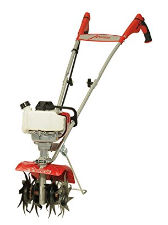
#2

9.8
SuperHandy Electric Tiller & Cultivator
- Front tine tiller & cultivator
- Battery powered
- Up to 14″ tilling width
- 4″ – 7″ tilling depth
- Weighs 25 lbs
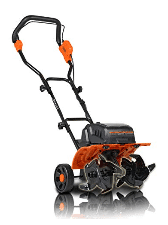
#3

9.5
Sun Joe TJ603E Tiller & Cultivator
- Front tine tiller & cultivator
- Corded electric powered
- 16″ tiller width
- 8″ maximum tilling depth
- Weighs 27 lbs
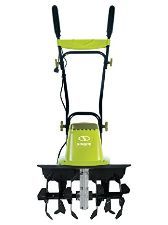
#4

9.4
Sun Joe TJ600E Tiller & Cultivator
- Mini tiller & cultivator
- Corded electric powered
- 14.2″ tiller width
- 7.1″ maximum tilling depth
- Weighs 18.7 lbs
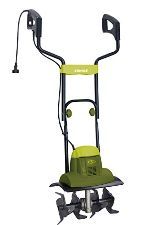
#5

9.2
Sun Joe TJ604E Garden Tiller & Cultivator
- Front tine mini tiller & cultivator
- Corded electric powered
- 16″ tilling width
- 8″ maximum tilling depth
- Weighs 27 lbs
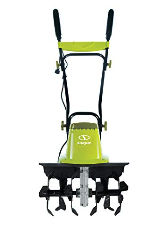
#6

9.1
Earthwise TC70001 Tiller & Cultivator
- Garden rototiller & cultivator
- Corded electric powered
- 11″ tilling width
- 8″ maximum till depth
- Weighs 27 lbs
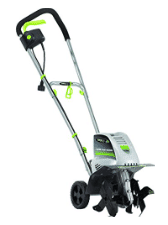
#7

8.8
SuperHandy RotoTiller Cultivator
- Cultivator rototiller
- Gas powered
- Up to 14″ tiller width
- Up to 6″ till depth
- Weighs 129 lbs
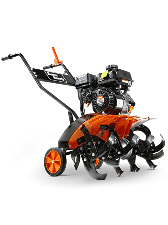
#8

8.8
Eveage Garden Electric Tiller & Cultivator
- Front tine tiller & cultivator
- Corded electric powered
- 18″ tiller width
- 8″ maximum tilling depth
- Weighs 27 lbs
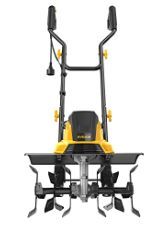
#9

8.6
Greenworks 27072 Corded Tiller
- Front tine garden tiller & cultivator
- Corded electric powered
- 8.25″ – 10″ tilling width
- 5″ maximum tilling depth
Weighs 29.3 lbs
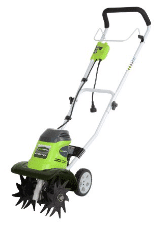
#10

8.4
Earthquake MC33 Mini Tiller & Cultivator
- Front tine tiller & cultivator
- Gas powered
- 6″ or 10″ tilling width
- Till depth not indicated, has a till depth bar
- Weighs 33 lbs
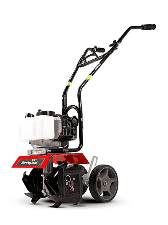
We also considered 5 other:
Our Top Choice
#1
9.9
Mantis 7940 Gas Tiller & Cultivator
- Garden tiller & cultivator
- Gas powered
- 9″ tilling width
- 10″ maximum tilling depth
- Weighs 24 lbs
Picked by 452 people this month!

About Our Rankings:
Our recommendations are based on expert comparisons between available products in each product category. For baby monitor, we chose the topics that we think matter most to our users, and provide consise, clear comparisons of the features that matter. Our rankings change day-to-day based on our proprietary algorithms, that crunch data to identify top-performing products and tailor recommendations to exactly what our readers are looking for.

25
Models
Evaluated

4
Topics
Considered
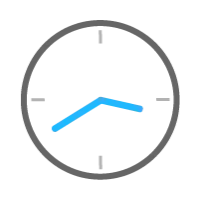
13
Hours of
Research

7,122
Purchases
Analyzed
Rototiller Buyer's Guide
 A rototiller is a helpful tool for landscapers and gardeners. Choosing one comes down to power, size, and versatility.
A rototiller is a helpful tool for landscapers and gardeners. Choosing one comes down to power, size, and versatility.
Overview
When shopping for rototillers, it’s important to know what to look for so you can easily compare products. Here are some considerations to keep in mind:
What is a rototiller?
A rototiller is a power tool that is used to prepare soil for planting. Before planting, compact soil must be loosened or plants will have a hard time taking root and the soil will have poor drainage. Rototillers can also be used to mix in compost, fertilizer, and topsoil to an already prepared area of land.
A rototiller uses metal tines to cut up the soil. Usually the tines reach a depth of five to twelve inches. The rototiller will prepare rows of soil in varying widths depending on the size of the machine. Usually the width varies from 6 inches to 20 inches.
What are the important features of a rototiller?
The most important features of a rototiller are the number, size, and location of the tines as well as the rototillers’ power source.
The tines are the part of the rototiller that cuts the soil. The tines can be placed in the front of the machine or in the back of the machine. If you are wanting to till in small and large plots of land, you may want to check to see if the rototiller you are considering allows you to adjust the number of tines to increase or reduce the width of the tilled area. Additionally, some rototillers allow the tines to rotate in reverse. This versatility helps you navigate around small gardens and break up denser soil and roots.
Rototillers can be either gas-powered or electric. Gas-powered rototillers tend to be heavier and noisier than their electric counterparts. Electric rototillers tend to have less power, so they are not suited for tilling extremely compact land or land that has never been prepared.
Some other features to consider are shock reduction features or ergonomic designs. Rototillers can be heavy and physically demanding to operate, so features that try to reduce the physical impact may be beneficial.
 What are the different types of rototillers?
What are the different types of rototillers?
While many products on the market today are labeled as a rototiller, some are actually cultivators. A cultivator should be used in an area that is already prepared for planting. Cultivators tend to have less power, so they are ideal for aerating the soil, mixing in fertilizer, and weeding the surface soil. Cultivators can be electric or gas-powered as well. True rototillers are gas-powered, have larger tines, and contain a more powerful motor. They are designed for transforming land into an area suitable for planting.
Some machines are combination rototillers and cultivators. These machines usually have tines that can be removed to reduce the width and depth of the tilling. Because these machines must function as a rototiller, they are heavier and more powerful than stand-alone cultivators.
Are there any substitutes or replacements for a rototiller?
There are no true replacements for a rototiller. The best alternative is to shovel or till the land by hand. While this is possible with small areas, it is physically demanding and time-intensive and therefore not a good option for large areas or extremely dense soil.
Since many rototillers on the market today are actually smaller cultivators, a cultivator is a possible substitute depending on your tilling needs. Cultivators tend to be less expensive and easier to handle, but they are not as powerful as a true rototiller.
Rototiller FAQ
So how do you choose the rototiller that’s right for you? These are the questions consumers are asking when shopping for rototillers.
What is the difference between front-tine and rear-tine rototillers?
Front-tine rototillers have the tines in the front of the machine with the wheels in the back, closer to your feet. This positioning allows for greater navigability in small garden plots. Front-tine rototillers usually are less powerful than rear-tine machines. Rear-tine rototillers have the wheels in front and the tines in back, closer to your feet. There is usually a safety cover over the tines. Rear-tine rototillers are ideal for larger, open areas of land.
Can you use a rototiller in rocky soil?
Yes, you can use a rototiller in rocky soil, but you will need to slowly break up the soil and then remove rocks by hand. Using a rototiller over rocks can damage the blades and the machine as a whole.
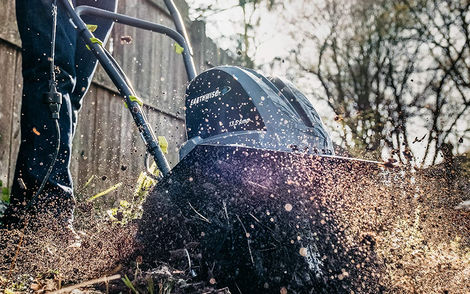
Will a rototiller break up roots?
Yes, a rototiller with enough horsepower will break up surface roots in the soil. Typically you will want to look for a rototiller with at least 3 horsepower. However, residential rototillers will not break up extremely large roots, such as those from trees.
How deep should a rototiller dig into the ground?
If you are preparing land for the first time, you will want to look for a rototiller that can dig at least eight to ten inches into the soil. If you are wanting to loosen top soil or mix in nutrients like fertilizer, the rototiller only has to dig in about four or five inches.
Final Thoughts
A rototiller is a strong addition to the toolbox of an avid gardener. With a variety of gas-powered, electric, and combination tillers and cultivators on the market, you are sure to find the perfect rototiller for your landscaping needs.

Written By Ryan W.
Ryan graduated with a degree in journalism and spent years building his writing career in the tech media field. An avid fan of gadgets and tech in general, Ryan has spent years testing and reviewing a wide array of devices. He specializes in reviewing everything from laptops and smartphones to more niche items like smart home devices and security cameras.
This site is a free online resource that strives to offer helpful content and comparison features to its visitors. Please be advised that the operator of this site accepts advertising compensation from companies that appear on the site, and such compensation impacts the location and order in which the companies (and/or their products) are presented, and in some cases may also impact the rating that is assigned to them. To the extent that ratings appear on this site, such rating is determined by our subjective opinion and based on a methodology that aggregates our analysis of brand market share and reputation, each brand’s conversion rates, compensation paid to us and general consumer interest. Company listings on this page DO NOT imply endorsement. Except as expressly set forth in our Terms of Use, all representations and warranties regarding the information presented on this page are disclaimed. The information, including pricing, which appears on this site is subject to change at any time.



